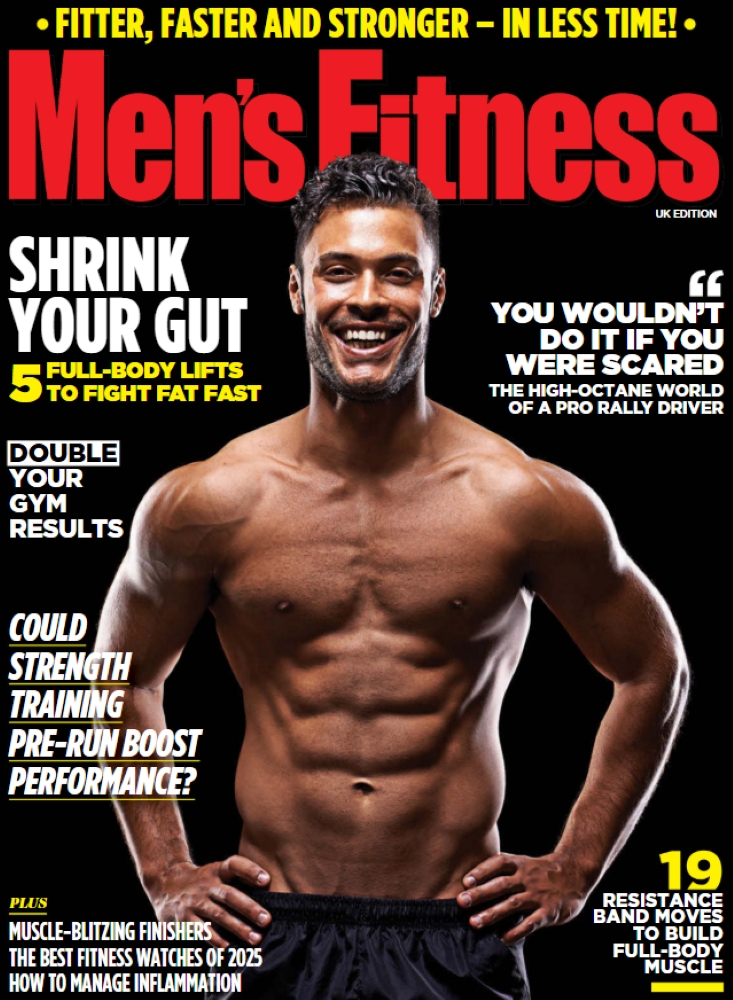Paralysed from a freak accident, ex rugby pro Ed Jackson refused to give up hope. Now he’s defying all the odds to scale some of the world’s biggest mountains.
At 27, Ed Jackson was told he would never walk again. A freak accident, involving a swimming pool and a miscalculated dive, broke his neck and crushed his spinal cord. Jackson had to be resuscitated three times and spent weeks in intensive care – for the first of those, he couldn’t so much as twitch a muscle.
But rugby players are made from stern stuff, and three years on from the accident, Jackson’s recovery is nothing short of miraculous. Defying the predictions of even the most optimistic specialists, the former London Wasps and Bath man has not only learned to walk again, he’s found a new calling: mountaineering.
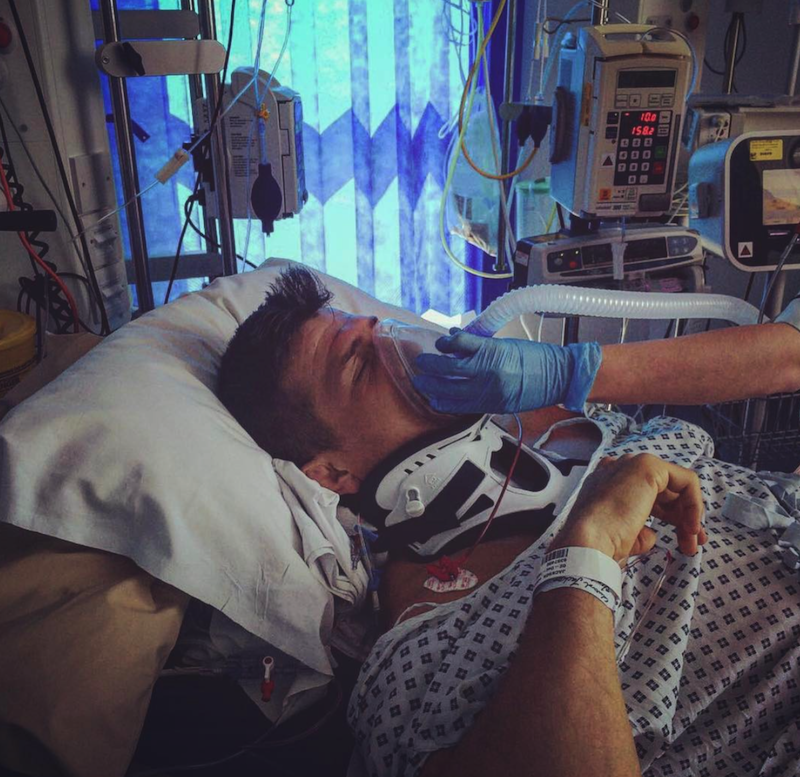
Jackson in intensive care after breaking his spine | Photo: edjackson8.com
Men’s Fitness: How did the accident happen?
Ed Jackson: “In April 2017, I was having a weekend off rugby, because I was recovering from a shoulder injury. I was at a family friend’s house and dived into what I thought was the deep end of their pool, but it turned out to be shallow and I hit my head. The impact dislocated the C6 and C7 vertebrae in my neck, which effectively broke my neck and rendered me paralysed from the shoulders down.
“Luckily, my dad and one of my mates were in the pool to drag me to the surface and make sure I didn’t drown. I had an emergency operation that night to pick bits of bone out of my spinal cord and realign everything, then I was in intensive care for a few weeks. There was no sign of movement for ten days.”
MF: That would be unbelievably hard for anyone, but for an athlete in their prime it seems particularly cruel. How did you get your head round your situation?
EJ: “Being an athlete does make it cruel, because in many ways you hold your identity in your physicality. From the start I knew there was absolutely no chance of playing rugby again, which was a tough one to take because rugby was all I had ever known.
“In professional sport, once you realise you’re good enough – which for most sports is around 14 or 15 – that is then your sole focus and ambition in life. After my accident, I knew that had gone, so it was a difficult process trying to get my head around that.
“Equally, though, I knew there was so much more on the line than my career: it was a matter of trying to become independent again. I just wanted to use my arms, so that I wouldn’t be a burden on my family or my wife – that was my biggest driving force.
“When I was just thinking about myself, it wasn’t enough of a driving force – I’d end up feeling sorry for myself – but when I thought about doing it for my wife, my mum and my support network, that spurred me on to spend every waking minute just trying to move something.”
MF: When did you manage that first flicker of movement?
EJ: “At the start, I couldn’t move anything at all, so I had to just close my eyes and picture myself moving – trying to send those messages down from my brain. Considering I had a severely damaged spinal cord – I only had about 4mm left, whereas there’s about 12mm in a healthy cord – because a bit of cartilage had sliced through it, there was a very small chance that any messages would get through.
“But I thought, if I look back in six months or a year’s time and I’m still not independent, but I know I’ve done everything I can, that will be easier to accept. It meant digging harder and deeper than I’ve ever gone before, but eventually I got a result, which was a shock to everyone.
“It was ten days before my toe flicked for the first time, and to say I was confident something would happen would be a lie. Doubt creeps in, but I just knew I wasn’t going to stop trying until either something happened or enough time had passed to accept nothing was going to happen.
“Even though I wasn’t moving, it was so mentally and physically draining. Being neutrally fatigued is a strange experience: you try and wiggle your toe for an hour and you haven’t even moved, but then you pass out asleep because you’re so tired. It’s intense focus for long periods of time.

Jackson learning to walk again | Photo: edjackson8.com
“It took a lot of hard work, but once there was that glimmer of hope after my toe moved, there was something to hold on to and build from. It made staying positive much easier, and when I was positive that affected the changes in my body.
“You can’t simply outwork these things, because it is possible to overdo it and you’ve got to give your body the time to recover. I had a lot of time in hospital by myself to become quite methodical about the way I approached my rehab, and I realised that I did overdo it a couple of times, which set me back. It was about time and energy management, and plenty of rest. When I realised that, I hit a sweet spot and progress came fairly thick and fast.”
MF: How did things progress after that?
EJ: “It was still uncertain for a long time, because the improvements could stop at any point. There were periods where nothing changed for a while and I did end up thinking, is this it? But you have to keep the faith, and every time you get one of those little wins you hold onto it and it gives you the motivation to go for the next one.
“Eventually when I started standing up, I began to hope I would be able to ditch the wheelchair one day, but setting much smaller goals was key: trying to move my finger a bit more, or raise my arm slightly higher.”
MF: Do you think your athlete’s mindset helped your recovery?
EJ: “I suppose it can’t have hurt. I’d had four shoulder operations and had experienced plenty of knockbacks in my career, and I wasn’t a world-beating player in terms of my skillset, so I used to hang my hat on working harder than those around me.
“All I was trying to do was out-work the situation I found myself in – that was the approach I took throughout my career and that was the approach I took to my recovery.
“When you’re a player, you think pre-season fitness tests are your limit, but lying in a hospital bed unable to move made me realise that discomfort was nothing.”
MF: You’ve since founded a company, Millimetres to Mountains (M2M) – talk us through that.
EJ: “M2M is a charity-focused events company I set up with my former teammate, Olly Barkley. It was founded on the ethos of starting small but dreaming big. Those small changes can result in a big change – as I proved – and that’s the same in all walks of life.
“The seed for M2M was planted when I was in hospital and started writing a blog (edjackson8.com). It wasn’t deliberate, I was just speaking to Alexa and doing a ‘brain dump’ at night to try to help me sleep. Then I woke up one morning and one of the rugby boys was reading through all my thoughts, which was good of him! He said I should make it public, because it might help others in a similar situation.
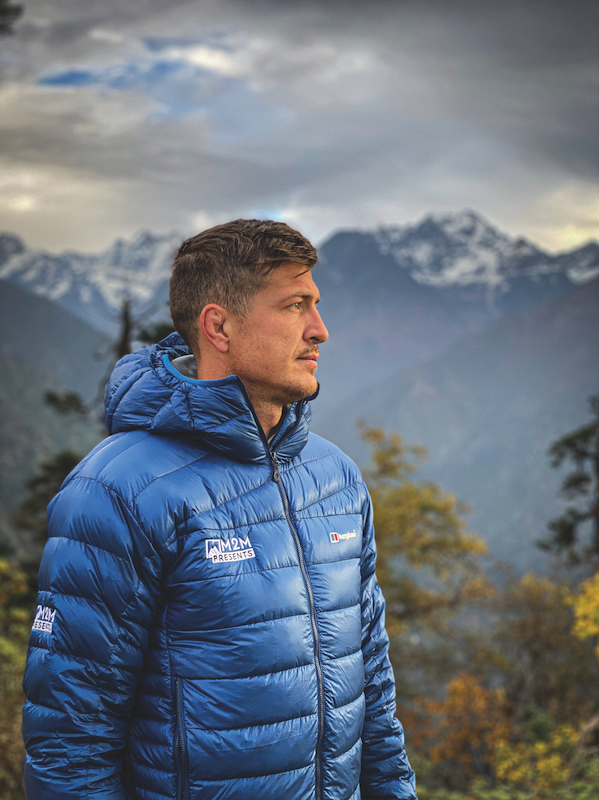
Photography: Matthew Riley
“I wasn’t really one for social media before my accident – or indeed for showing any weakness or vulnerability, because as a young bloke you try and put on this macho façade all the time – so putting it out to the world and being open was a difficult process, but it turned out to be really rewarding quite quickly.
“I was getting a lot of messages saying how my story was helping people to put things into context in their lives, and there were other people giving me advice which was a big help. All of a sudden there was some good coming out of my situation, rather than just negativity. I felt like I didn’t have to just be a burden on people and that there might be some positives to come out of it.”
MF: When did the mountaineering come into it?
EJ: “I ended up being approached by a charity called Neverest Orthopaedics, who asked if I would go to Nepal to help them raise awareness to build a spinal unit over there. I accepted straight away, went over with my wife, Lois, and just fell in love with the place. It’s a cliché, but when you’re in that environment, surrounded by mountains, you really do ‘find yourself’. I said to Lois, “This has got to be my life now.” Players struggle with their transition into the ‘real world’ post-rugby, but I felt this real belief that I had to keep helping people.
“At that point, having climbed Snowdon and felt the benefits of being outside and in the mountains, I had the idea of taking disadvantaged people, or anyone who might really benefit from it, into the great outdoors so they could push their limits and realise what they’re capable of.”
MF: Late last year, you conquered your biggest challenge yet: Mera Peak in the Himalayas. Just how tough was that?
EJ: “I knew that a 6,500m mountain was a pretty tough undertaking – particularly given where I was a few years ago and the fact the highest I’d been before that was about 3,500m – but the whole experience absolutely blew me away. When you’ve been resuscitated three times, you realise life’s too short and you need to start pushing your boundaries and saying yes more. I always want to do challenges that I’m not sure I’ll complete, and this was certainly one of those.
“Physically, it was completely brutal. My functional movement still isn’t amazing and climbing a mountain – unsurprisingly – is one of the hardest things you can do, so it was definitely a test. I was burning 10,000 calories a day for about two-and-a-half weeks, and I lost a stone and a half in that time – even though I was eating as much as I could. But standing on top of that mountain, it whacked me pretty hard: thinking about where I had come from and how lucky I was to be there, staring out at Mount Everest.”
MF: Where are you at now, physically?
EJ: “I still wear a ‘foot drop’ brace on my left foot, but I can get around the house without it now, which is pretty handy. The main weakness I have is all the way down the left side of my body – all through my core as well. That means I move awkwardly, so most of my rehab time is spent trying to fire more neurons into that left side.
“The strength is there, in a sense, but it’s an access thing, so it’s about sending those nerve messages into the right areas. Because I move awkwardly, I pick up niggles in other areas – anyone who’s got an imbalance will understand. A lot of it is about maintenance and staying on top of things, including old rugby injuries that still rear their heads from time to time.
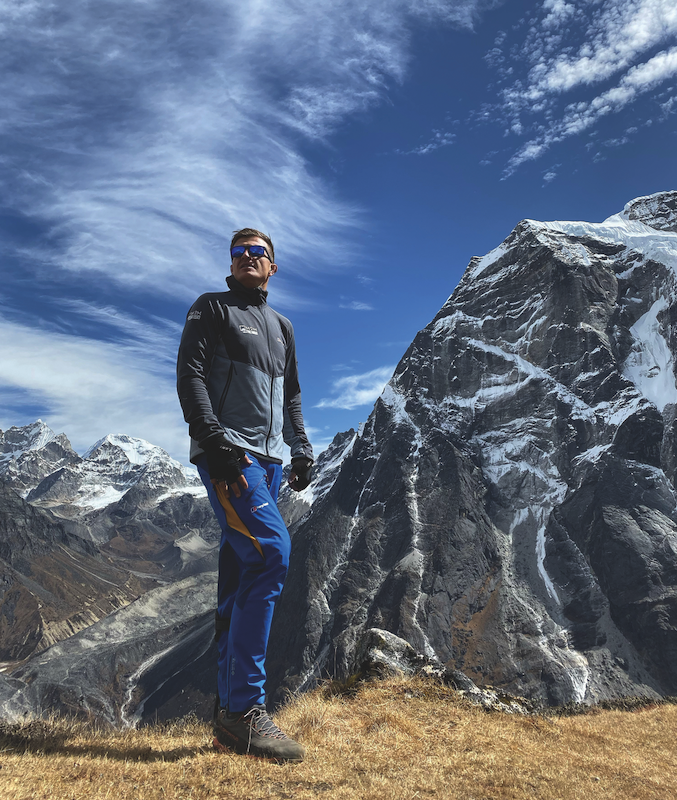
“It’s going to be an ongoing process for the rest of my life. I’m at a stage where I’m happy and I can do what I want, but that doesn’t mean I’m not motivated to keep improving.
“It’s been an interesting process getting used to being half the size I was when I was playing rugby, and I really didn’t like it for a while – I played between 112 and 115kg – but actually I don’t mind that at all now, because it’s functional for me to be climbing mountains. It’s been quite a liberating feeling knowing that I don’t have to sit in the gym for hours at a time doing bicep curls; I can do a lot more bodyweight stuff and mindful movements that will benefit me more now.”
MF: You’ve mentioned that you’ve got your sights set on Everest – was that an off-the-cuff remark, or is it a genuine ambition?
EJ: “In terms of inspiring other people, if I could drag myself to the top of Everest that would send a big message, so yeah, that does remain the dream – although recently all the sustainability issues around climbing Everest have made me think other 8,000m mountains would be better.
“But when I was standing on Mera Peak, looking up at Everest, there is an undeniable magnetism to that mountain, and I’m probably stupid enough to give it a go.”
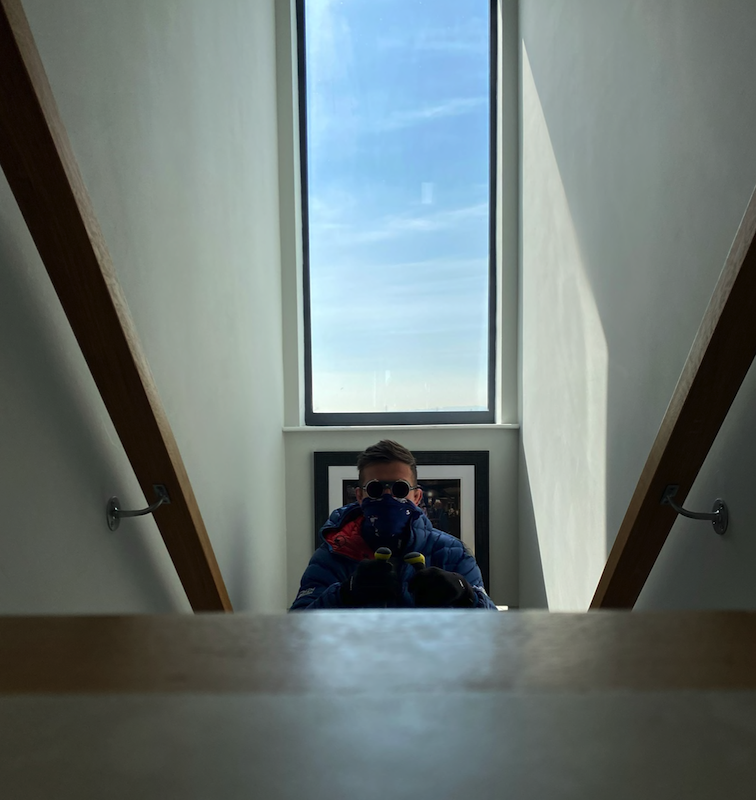
Photo: @edjackson8
That Everest ambition has been realised sooner than Jackson might have anticipated. At time of writing, he has just finished another extraordinary feat: scaling the equivalent height of Mt. Everest (29,029ft) by climbing up and down his parents’ stairs. Jackson is raising money for Wings for Life and the Forever Friends Appeal in support of the NHS. To donate, follow this link.
Head to the M2M Presents website, them2mgroup.com, for all climbs and events.
Ed Jackson is supported by Berghaus. Explore the full range of outdoor kit at berghaus.com








